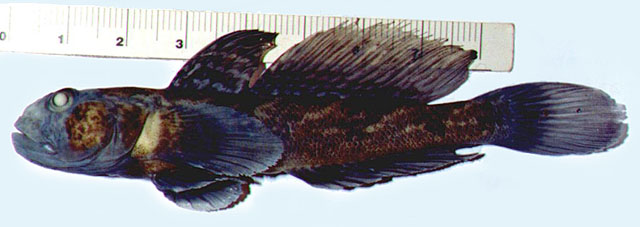| Gobiidae (Gobies), subfamily: Gobiinae |
| 16.2 cm TL (male/unsexed); max. reported age: 5 years |
|
benthopelagic; freshwater; brackish |
| Eurasia: Widespread all over the Marmara, Black and Caspian seas basins; inhabits mostly fresh- and brackish waters with low salinity (<2%). |
|
Dorsal spines (total): 7-8; Dorsal soft rays (total): 14-18; Anal spines: 1-1; Anal soft rays: 12-16. This species is distinguished from its congeners entering freshwater in Europe by the following characters: irregular position and shape of diagonal bars on body; first branched ray of second dorsal about as long as penultimate ray; no scales on midline of nape, in front of preoperculum; pelvic-disc fraenum with small rounded lobes and the length is less than 1/6 of width at base; scales in midlateral series 54-62 + 2-3; posterior part of first dorsal without black spot (Ref. 59043). |
| Occurs in brackish- and fresh-water habitats with low salinity (< 2 ppt); lagoons and lakes; large rivers to small, fast-flowing streams; on sand or mud bottom; mainly in well vegetated or high-complexity habitats. Abundant in backwaters and still channels (Ref. 59043). Longevity is 4-5 years; spawns for the first time at 2 years; spawning season in April to June, occasionally until mid-August; females may repeat spawning during a season; usually spawns for a single season. Males guard eggs until hatching; with adhesive eggs deposited on stones, shells and aquatic plants (Ref. 59043). Feeds on crustaceans (esp. Corophiid amphipods), aquatic insects (mostly chironomid larvae), polychaetes, also small fish and mollusks (Ref. 4696). |
|
Least Concern (LC); Date assessed: 01 September 2022 Ref. (130435)
|
| harmless |
Source and more info: www.fishbase.org. For personal, classroom, and other internal use only. Not for publication.
